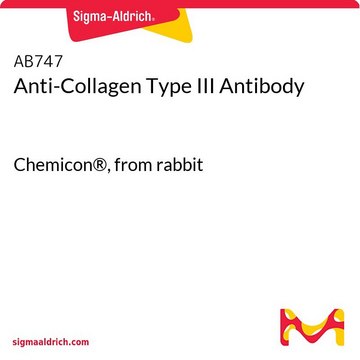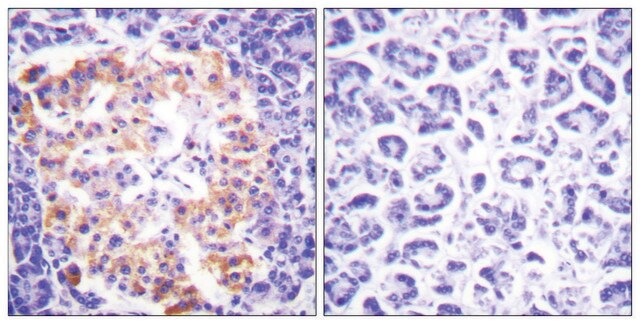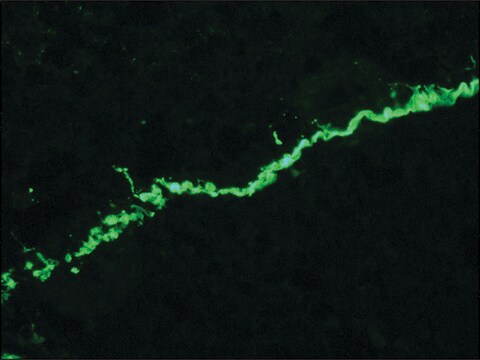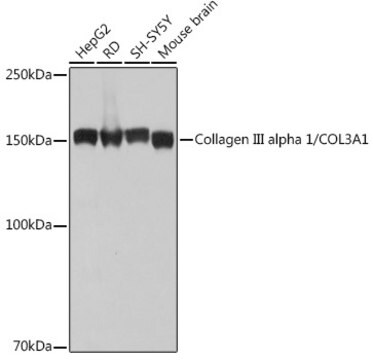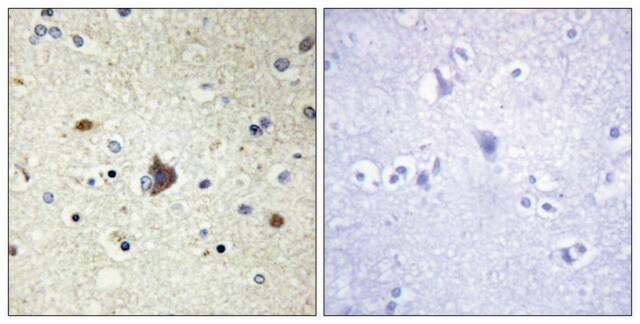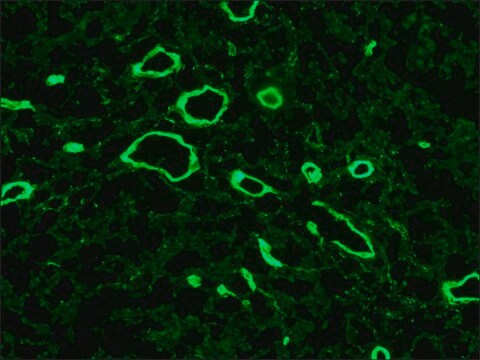Kluczowe dokumenty
SAB4200749
Anti-Collagen Type III (COL3A1) Antibody
mouse monoclonal, FH-7A
Synonim(y):
Łańcuch anty-kolagenualfa-1(III)
About This Item
Polecane produkty
Nazwa produktu
Przeciwciało przeciw kolagenowitypu III, mysie monoklonalne, clone FH-7A, purified from hybridoma cell culture
pochodzenie biologiczne
mouse
Poziom jakości
forma przeciwciała
purified from hybridoma cell culture
rodzaj przeciwciała
primary antibodies
klon
FH-7A, monoclonal
Formularz
buffered aqueous solution
masa cząsteczkowa
~70 kDa
reaktywność gatunkowa
rat, human
stężenie
~1.0 mg/mL
metody
ELISA: suitable
immunoblotting: suitable
immunofluorescence: suitable
immunohistochemistry: 10-20 μg/mL using heat-retrieved formalin-fixed, paraffin-embedded rat skin sections.
izotyp
IgG1
numer dostępu UniProt
Warunki transportu
dry ice
temp. przechowywania
−20°C
docelowa modyfikacja potranslacyjna
unmodified
informacje o genach
human ... COL3A1(1281)
Opis ogólny
Monoklonalne przeciwciało antykolagenowe typu III specyficznie rozpoznaje natywny i zdenaturowany kolagen typu III pochodzenia ludzkiego 1 i szczurzego 2. Nie rozpoznaje kolagenu typu I, II, IV, V, VI i X.
Kolagen typu III, znany również jako kolagen α-1(III) (COL3A1), jest kodowany przez gen zmapowany na ludzkim chromosomie 2q24.3-q31. Jest to kolagen o wysokiej ekspresji w naczyniach krwionośnych i narządach pustych.
Immunogen
Działania biochem./fizjol.
Postać fizyczna
Przechowywanie i stabilność
Inne uwagi
Nie możesz znaleźć właściwego produktu?
Wypróbuj nasz Narzędzie selektora produktów.
polecane
Kod klasy składowania
12 - Non Combustible Liquids
Klasa zagrożenia wodnego (WGK)
nwg
Temperatura zapłonu (°F)
Not applicable
Temperatura zapłonu (°C)
Not applicable
Wybierz jedną z najnowszych wersji:
Certyfikaty analizy (CoA)
Nie widzisz odpowiedniej wersji?
Jeśli potrzebujesz konkretnej wersji, możesz wyszukać konkretny certyfikat według numeru partii lub serii.
Masz już ten produkt?
Dokumenty związane z niedawno zakupionymi produktami zostały zamieszczone w Bibliotece dokumentów.
Nasz zespół naukowców ma doświadczenie we wszystkich obszarach badań, w tym w naukach przyrodniczych, materiałoznawstwie, syntezie chemicznej, chromatografii, analityce i wielu innych dziedzinach.
Skontaktuj się z zespołem ds. pomocy technicznej
